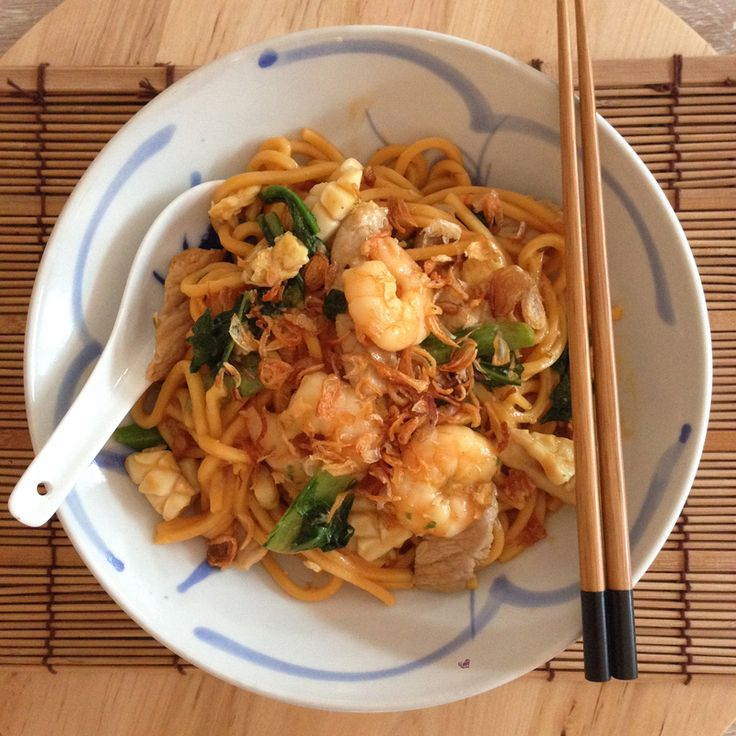Hokkien mee
A dish called Hokkien mee consists of rice and egg noodles that have been stir-fried with squid, prawns, and pork slices. Large amounts of a fragrant broth made from prawns and pork bones that are slowly simmered for many hours are essential to the recipe.
The diner can mix in the sambal chilli and calamansi limes that are served on the side to give it an extra zest and tang. The dish's aroma is enhanced by the addition of tiny cubes of fried lard and, in some cases, serving it on an opeh leaf, or soft areca palm bark.
Although pork and chicken are the two main traditional meats used in this dish, for health reasons for users, the chef can change the ingredients but still ensure the taste. delicious as well as the nutrients of dishes such as cuttlefish and bacon.
After World War II, Chinese sailors from the southern Chinese province of Fujian (Hokkien) invented the Singaporean version of Hokkien mee. They would gather along Rochor Road after work to cook leftover noodles from the noodle factories over a charcoal stove. This dish is regarded as a classic of Singaporean cuisine, and the Michelin Guide has recognized several hawker stalls that serve it.
To have an attractive Hokkien mee in Singaporean style, you can follow the steps below:
- Step 1: To prepare the prawns and squid, poach them in stock until they are cooked through and then set them aside.
- Step 2: Cut the fish cake into slices and trim the ends to a length of 3 cm.
- Step 3: Render the pork fat down into the oil in a frying pan until the lard becomes crispy.
- Step 4: Pour oil into a wok that fits your size, then stir-fry four beaten eggs until they are cooked.
- Step 5: Fry some more after adding the minced garlic, all of the noodles, and all of the sauces.
- Step 6: Add the bean sprouts and two cups of stock. Cook the noodles until they are tender.
- Step 7: Add the prawns, squid, and the lard turns crispy. If you would like more gravy, feel free to add extra seafood stock.
- Step 8: Garnish with parsley and present alongside calamansi and belachan limes.











